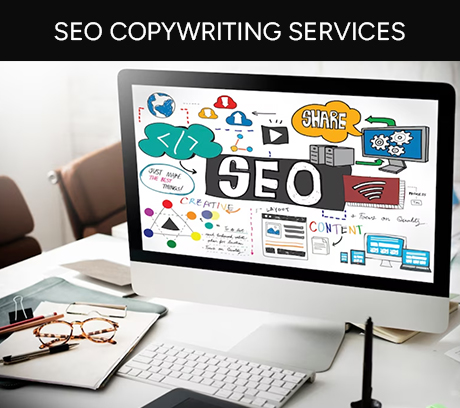
SEO Copywriting Content services
SEO Copywriting Services + Content Development
Let me tell you about the time I decided to write a book.
I started out by spending a year writing 75,000+ words, or roughly 224 pages.
After myself and a few editors read the book, I decided to trash everything and start over.
I then rewrote the book according to what content was already popular on my website. I spent half the time writing a book that was more helpful and useful to readers.
1,000 copies were published and printed. We sold out of all of them.
SEO copywriting is no different than the book I wrote. The formula is simple.
Find out what readers want.
Give readers what they want.
Give publishers (i.e. – search engines) what they want.

Let’s dive into each of these areas as they relate to SEO copywriting services.
Find out what readers want.
Most people develop content that they think readers want.
Wrong approach. Just ask the first 224 pages of my book that never made it to print.
If you write content that you think readers want, you’ll waste your time or money because chances are it won’t get read.
Instead, the first step we take with our SEO copywriting services is to develop a beautiful Excel spreadsheet. (Contact us if you want the spreadsheet template we use)
The content development spreadsheet will end up with three sheets.
- Sheet 1: SEO Keyword Research
- Sheet 2: Content that is already performing well in your niche
- Sheet 3: Your content development plan
There’s a lot of different ways to do long tail SEO keyword research, but the most basic (and free) way to compile a list is through the Google AdWords tool.
Plug in your website, your competitors websites, and the keywords you already know you want to rank for. Jot down these keywords in Column A of your spreadsheet. In Column B, put down how many searches occur per month for your keyword. In Column C, put the estimated value per click.
Columns B + C will help you prioritize the content to create from column A.
In Sheet 2, find content that is already performing well in your niche. Some places to find well performing content:
- Google (Using search queries like, best + “keyword” + posts)
- Wikipedia (In the links section at the bottom of the page)
- Reddit (Under subreddits)
- Pinterest (Search your keyword and look for repinned content)
- Open Site Explorer (To look at competitor content)
- BuzzSumo (To find amazing content)
- Google (Looking at the first few pages)
They rather pay us to deliver them a report showing them exactly terms to target, and what content to create.
These resources will help you fill out Sheet 2, which consists of the url in Column A, and the Page Title in Column B.

Sheet 3 is where everything comes together. From your research, you’ll develop a content development plan to begin attracting the right traffic to your website. Once the plan is finished, you’ll be able to focus on creating content (or you’ll be able to outsource the content development to someone who offers SEO copywriting services…hint hint.)
- Column A will be your URL (leave it blank if the URL hasn’t been created. You’ll fill in the URL as you create the content to help you make progress).
- Column B will be your page or post title that you want created.
- Column C will measure the length of your page title (use the Moz Page Title Tool to make sure your title appears well on search engines).
- Column D will be the target keyword you’re trying to rank for.
- Column E will be the monthly searches of your keyword.
- Column F will be the value of your keyword.
- Column G will be the average rank of your website for the keyword (again, leave it blank for now. This will help you measure your progress)
- Column H will be the monthly traffic you get from your new page (leave it blank, and use this column to measure how well your content performs.
This process may seem like a lot of stuff to do. It is.
But in order to figure out what readers truly want, this process is completely necessary for any SEO copywriting project. It will guide copywriters and give you the chance to measure your marketing ROI.
Give Readers What They Want
When it comes time to develop content, your job (or our job) is to produce easy to read, valuable and visually appealing material.
Easy To Read
We’ve found that the easier our content is to read, the better chance it has at performing well in search engine rankings. We use the Flesch-Kincaid readability test to measure how well an article was written (which is included in the Yoast app for WordPress). Any article with a score under 50 gets edited and rewritten until the score improves.
Valuable
The goal of this post, and every post we write is for someone to share the article with their friends (Click to tweet about this post if you like it).
The more your article is shared, the better it performs on search. The only way an article gets shared is if there is something valuable for the reader – tips, insight, or inspiration.
Ask yourself at the end of the post, “How did this article make my life better?” If the answer is, “it didn’t,” then don’t click “publish.”
Visually Appealing
Percentages say that 90% of the visitors to this page won’t read this sentence.
Why? Because most web visitors land on a page and within an instant, decide whether or not to read based on the site’s design.
Most SEO copywriting services don’t include making content visually appealing because it takes too much work.
But there are simple things you can do to enhance the design of a page. Add bold, italicized font. Bullet point lists and subheadings are easy ones. And of course, pictures.
Give publishers (i.e. – search engines) what they want.
Now that we’ve created valuable content we know that readers want, it’s time to give publishers (i.e. search engines) what they want.
When I published my book, the publisher had distinct opinions on what should be in the book. Search engines are no different.
Simple things to check for:
Is your keyword in the URL?
Does the page title contain the keyword?
Is your keyword in the meta description?
How often does your keyword appear?
Where does your keyword appear?
Do you use your keyword in any subheadings?
Do you have an image with the keyword in the alt tag?
You can check for all of these items using a WordPress plugin called Yoast.
You can also see how a search engine reads your page by plugging your url into a site called SEO Browser.
If you do both of these steps, you’ll be ahead of the game.

Next Steps
You probably came to this page looking for someone to develop content for your website. With this post, we’ve given you all the content development steps we normally take.
Your next step is to begin taking action on the steps we identified to create great content.
How often does your keyword appear?
Or you can click here to request a SEO copywriting services quote.